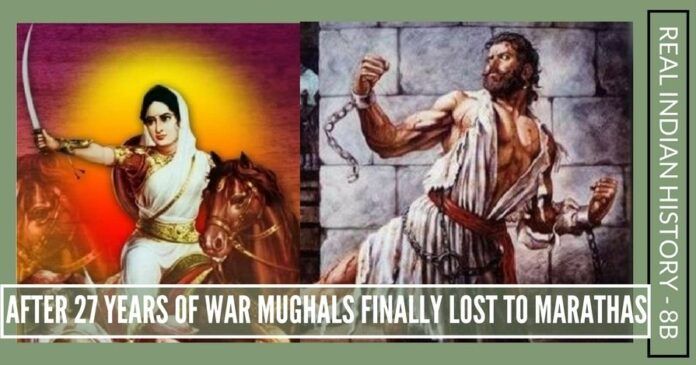
The Previous Parts of this series can be accessed here. Part 1, Part 2, Part 3, Part 4, Part 5, Part 6, Part 7 and Part 8A. This is part 8B.
Shivaji somehow managed to escape captivity from Agra, disguising himself as a Sadhu and finally went back to Maharastra. It is often speculated that Ram Singh who had sympathies for Shivaji due to his dream of Hindavi Swarajya had helped him escape. Aurangzeb suspected this and punished him severely with a transfer to Assam.
Soon, Shivaji decided to go on an all-out offensive against the Mughals and regained almost all forts that he had ceded to the Mughals in the treaty of Purandar.
Several saints such as Tukaram and Ramdas played a key role in guiding Shivaji. Samarth Ramdas extensively toured Maharashtra and encouraged the youth to join the army of Shivaji. He encouraged and inspired Shivaji to fight to liberate the country from the Mlecchas.
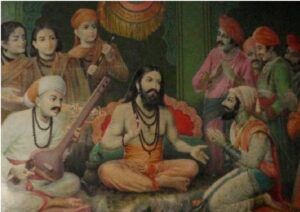
In his book ‘Shivaji and his Times’, Jadunath Sarkar wrote, “Shivaji proved, by his example, that the Hindu race could build a nation, found a State, defeat its enemies; they could conduct their own defence; they could protect and promote literature and art, commerce and industry; they could maintain navies and ocean-going fleets of their own, and conduct naval battles on equal terms with foreigners. He taught the modern Hindus to rise to the full stature of their growth. He demonstrated that the tree of Hinduism was not dead and that it could put forth new leaves and branches and once again rise up its head to the skies.”
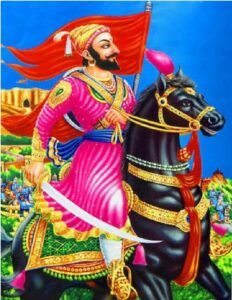
In his book ‘House of Shivaji’, Sarkar wrote, “The Historian of Shivaji at the end of a careful study of all the records about him in eight different languages, is bound to admit that Shivaji was not only the maker of the Maratha nation but also the greatest constructive genius of medieval India . States fall, empires break up, dynasties become extinct, but the memory of a true “hero as King” like Shivaji remains an imperishable historical legacy for the entire human race. – The pillar of people’s hope. The center of a world’s desire, to animate the heart, to kindle the imagination, and to inspire the brain of succeeding ages to the highest endeavors.”
Shivaji won several other battles including the famous battle of Salher which was an epoch in Hindu history as it was the first large-scale open-field battle in several years that a Hindu army had won against a Muslim army. Shivaji finally crowned himself Chatrapati (Paramount Sovereign).

Samarth Ramdas had this to say on the great Shivaji, “He can be glorified as successful, famous, blessed, valorous, meritorious and an icon of morality. There has been none like him, a knower of Dharma, who has protected Hindu Dharma in Maharashtra.”
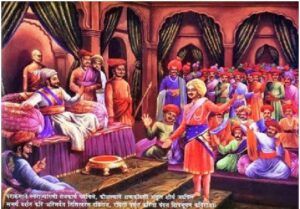
The Braj poet Kavi Bhushan too was full of praise for Shivaji Maharaj. He said, “Kashi would have lost its splendor, Mathura would have become a mosque; if it had not been for Shivaji, all would have been circumcised (converted)”
After his coronation, Shivaji went on an expedition to the south, conquering several lands such as Khandesh, Ponda, Belgaum, Karwar, Kolhapur and even captured the forts of Vellore and Jinji in far away Tamil Nadu.
Shivaji became ill and was on his deathbed. He told his commanders — “I leave, it is my time to go. Liberate Saptasindhu from Yavanas, rescue Kashi Vishwanatha and other Jyotirlingas. Bring them under Hindu rule.”
Sambhaji had been disliked by several Maratha
nobles but his sacrifice earned him their respect.
Sambhaji, the son of Shivaji, had fallen out with Shivaji during his last years. He had deserted his own father and had even joined the Mughals for a while. Sambhaji returned and was confined to Panhala by Shivaji. However, when Shivaji died, Sambhaji escaped confinement and took over the Maratha empire after defeating and killing his step-mother Soyaribai, who wanted to crown her own son Rajaram, in a power struggle.
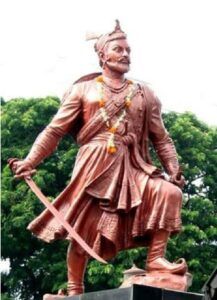
Samarth Ramdas had refused to meet Sambhaji because of his earlier behavior but wrote a letter to him after he was persuaded to do so by his followers. Ramdas told Sambhaji to shed his ego, anger, and malice, adopt humility and kindness for his people. Ramdas told Sambhaji to fight for Dharma and Hindavi Swarajya and to remember his own father Shivaji for inspiration. Soon after this, the great Saint of Maharastra passed away. Sambhaji built a memorial for Ramdas.
It was under Tarabai, widow of Rajaram that the Mughal forces began pulling out from the Deccan.
After Shivaji’s death, Aurangzeb immediately invaded the Deccan to finish off the vulnerable Marathas. Aurangzeb thought that with Shivaji dead the fall of the Marathas was imminent. He couldn’t have been more wrong. Sambhaji valiantly fought the Mughals for nine years. Having been inspired by the words of Samarth Ramdas,Sambhaji completely redeemed himself with this glorious struggle against the Mughals. While the Mughals managed to easily conquer the Deccan Sultanates, they failed to subjugate the Marathas. Sambhaji and his friend Kavi Kalash were finally captured by Mughal soldiers at Sangameshwar after a bloody skirmish.
Dennis Kincaid wrote, “He (Sambhaji) was ordered by the Emperor to embrace Islam. He refused and was made to run the gauntlet of the whole Imperial army. Tattered and bleeding he was brought before the Emperor and repeated his refusal. His tongue was torn and again the question was put. He called for writing material and wrote ‘Not even if the emperor bribed me with his daughter!’ So then he was put to death by torture”.
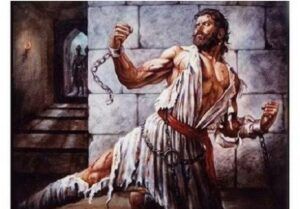
Sambhaji earned the title of Dharma Veer (Defender of Dharma) with his great sacrifice. Sambhaji had been disliked by several Maratha nobles but his sacrifice earned him their respect. Even Sambhaji’s biggest detractors had become outraged by his brutal killing. The Marathas rallied around Rajaram, the second son, and brother of Sambhaji. Rajaram gave a speech at Raigad where he vowed the Marathas would defeat the Mughals someday. Though not as capable or brave as his predecessors, Rajaram was an able leader and led the Marathas well during these tough times.
An epic twenty-seven-year war which commenced with Aurangzeb’s invasion of the Deccan finally began ending with the death of Rajaram after his widow Tarabai took over. It was under Tarabai that the Mughal forces began pulling out from the Deccan.
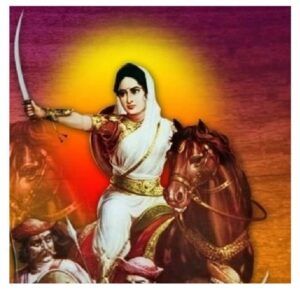
The mighty Mughals could never subjugate the much weaker Marathas who defeated them using guerrilla tactics. Aurangzeb died a sad man after a twenty-seven-year war at the old age of ninety after having lost the war to the Marathas and having failed in his objective to wipe them out. After the death of Aurangzeb, the Marathas began expanding northwards so as to annex various Mughal territories.
. . . to be continued
- Real Indian History – Part 14 - February 19, 2018
- Real Indian History – Part 13 - February 15, 2018
- Real Indian History – Part 12 - February 12, 2018


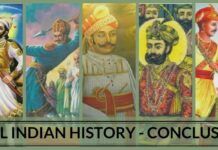








Tamil Nadu is in the grip of greedy politicians who pride themselves atheists cashing in on the public’s antipathy towards brahmins. The other religious propagandists exploit the situation. Majority do not understand they divide Hindus for their own benefit. Majority of the politicians are plain thieves and unluckily from classified as backward(s). Something to be done so that the forward castes enter into Politics and administration so that the entire population benefitted and understand how they suffered due to below average thieves as rulers